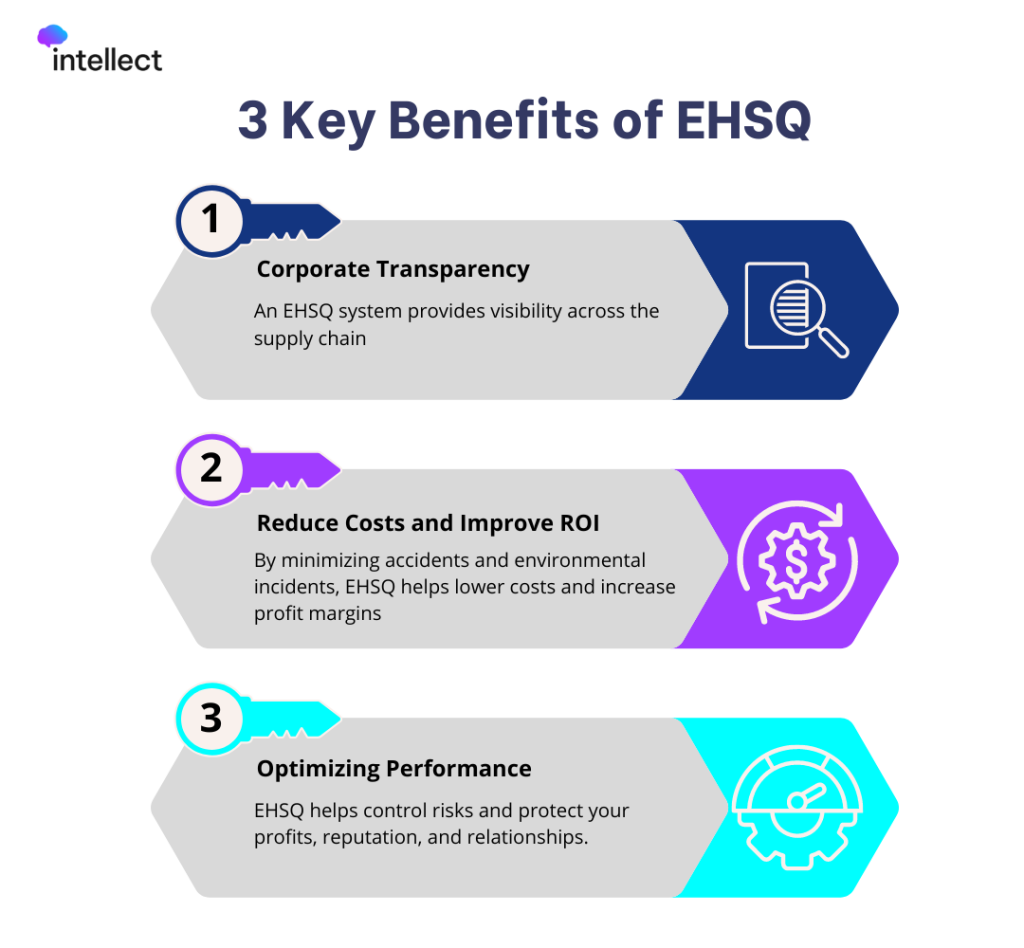The Complete Guide to EHSQ Success
August 27, 2024

The Complete Guide to EHSQ Success
When we talk about digitalization today, it’s more than just a shift from paper to screens—it’s a transformation that impacts every aspect of a company, including how we approach sustainability. As the quality expert Joseph Juran famously said, “Quality means doing it right when no one is looking.” This mindset is crucial in Environmental Health, Safety, and Quality (EHSQ) systems, where integrating quality into every layer of operations is not just beneficial—it’s vital.
Consider the BP oil spill as a reminder of what’s at stake: the explosion caused immediate harm to both humans and marine life, and the environmental damage continues even years later. The disaster, rooted in cost-cutting and poor safety standards, highlights the critical need for a robust EHSQ system—not just for compliance, but for the long-term sustainability of both the environment and the business.
What is EHSQ?
EHSQ stands for Environmental Health, Safety, and Quality. This system ensures that your company’s operations protect workers, the environment, and product quality—all while complying with regulations. In a world increasingly focused on sustainability, EHSQ helps companies prevent accidents, minimize environmental impact, and foster a culture that values both safety and quality.
Why is EHSQ Important?
A well-implemented EHSQ system isn’t just about avoiding fines or meeting regulations—it’s about creating a safer, more sustainable workplace that contributes to the long-term success of your business. By integrating EHSQ processes, you can reduce environmental risks, enhance operational efficiency, and drive continuous improvement, all of which contribute to a stronger ROI.
3 Key Benefits of EHSQ

- Corporate Transparency: An EHSQ system provides visibility across the supply chain, ensuring transparency and traceability in your operations. This not only builds trust with stakeholders but also aligns with sustainability goals.
- Reduce Costs and Improve ROI: By minimizing accidents and environmental incidents, EHSQ helps lower costs and increase profit margins. A safer, more efficient workplace means quicker ROI and a stronger reputation for sustainability.
- Optimizing Performance: EHSQ helps control risks and protect your profits, reputation, and relationships. By fostering a culture of continuous improvement, you remain competitive and relevant in an increasingly eco-conscious market.
6 Steps to EHSQ Success
- Understand Your Pain Points and Bottlenecks: Start by identifying the biggest challenges in your EHSQ processes. This will help you target improvements that can make the most significant impact on both safety and sustainability.
- Identify the Cost and ROI: Calculate the true cost of current EHSQ processes, including potential savings from reducing accidents and environmental incidents. This will help justify the investment in a robust EHSQ system.
- Create a Budget: Plan for your EHSQ investment by setting a budget that reflects the importance of safety, quality, and sustainability in your operations.
- Match Features with Your Pain Points: Choose an EHSQ system that addresses your specific challenges and aligns with your sustainability goals. This ensures the solution is both effective and relevant.
- Include a Technical Expert on the Team: Bring in experts who understand the technology behind EHSQ systems to ensure successful implementation and long-term sustainability.
- Demand Live Customer Support: Continuous support is crucial for maintaining your EHSQ system’s effectiveness. Ensure you have access to experts who can assist with ongoing training and troubleshooting.
You Should Know!
Successful EHSQ implementation relies on top management commitment, adequate resources, and a strong focus on sustainability. It’s about more than just compliance—it’s about creating a culture that values safety, quality, and environmental stewardship.
Tips to Increase Your EHSQ Productivity
- Get Things Done the First Time: Prioritize efficiency and thoroughness in your EHSQ tasks to reduce errors and improve outcomes.
- Take More Pictures: Visual documentation can quickly convey situations, making it easier to address issues and find sustainable solutions.
- Delegate: Empower your team by delegating tasks and using your EHSQ system to manage follow-ups and reminders.
- Give More Responsibility to Teammates: Foster a culture of ownership and responsibility, allowing your team to take charge of their EHSQ tasks.
- Define Deadlines: Effective time management is key to maintaining a productive and sustainable EHSQ process.
Quality and sustainability go hand in hand, and transforming your EHSQ practices is essential for success. By digitizing EHSQ, you not only reduce your environmental footprint but also gain a competitive edge. Remember, sustainability isn’t just a trend—it’s a responsibility. Let’s make it a core part of our EHSQ journey.
